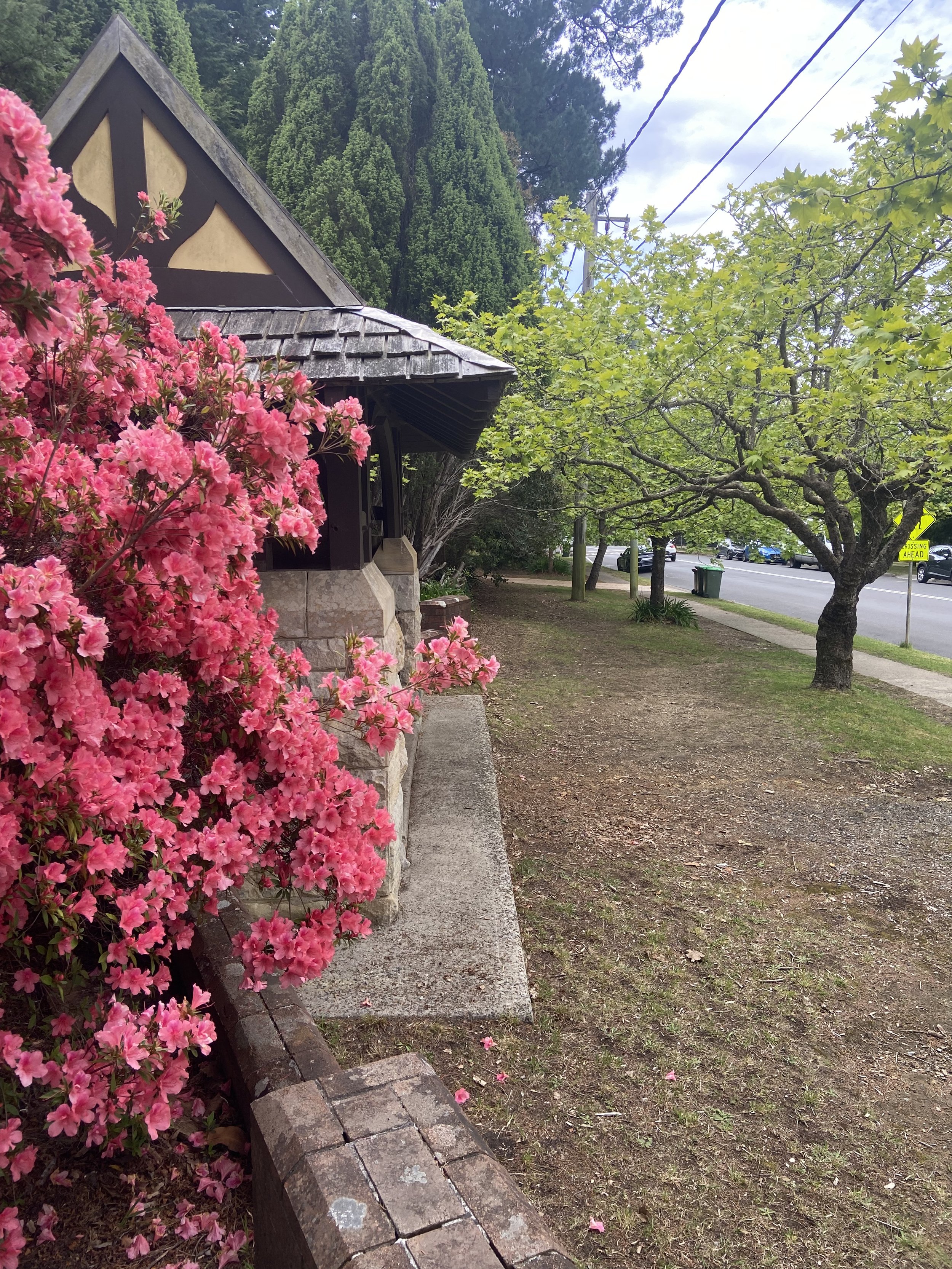A faithful presence.
Wentworth Falls barely existed before the railway came in the mid-1860s and the land was not sub-divided in earnest until the 1880s, when holiday homes for Sydney folk, services and guest-houses were built and the proposed village of Brasfort was laid out south of the highway.
The first Anglican service was held in Cale’s store by the rector of Springwood, whose jurisdiction extended west as far as Wentworth Falls. With the financial assistance of Thomas Cale and other local people, a site for a church was purchased in 1887. Funds to build a church were assisted by 100 pounds from the trustees of the Anglican parish in Glebe and the wooden church was erected by J. Poulton for 229 pounds in 1888-9. The service of dedication on 9 March 1889 was conducted by Alfred Barry, the controversial bishop of Sydney, just before his return to England.
Holy Trinity remained part of Springwood parish until 1911. In 1906, because of the size of the parish, a parsonage was built on adjacent land to the west purchased for this purpose. After Wentworth Falls with Lawson became a separate parish in 1911, the parsonage became a rectory in 1912.
The wooden bell-tower (now disused) was constructed to house the bell cast in 1936 in memory of B.R. Perkins, a parishioner who had died in 1914.
The decorative lych-gate was constructed in 1922 as a memorial to D.H. Gilfillan.
In 1925 Wentworth Falls was separated from Lawson as an independent parish, reflecting, like the public school nearby, the population increase in the township. A new rectory to the east of the church was built in 1987 and in 1989 the old rectory on the other side of the church was sold, dismantled and re-erected in Pritchard Street. A hall built on the old rectory site was dedicated in 1989 and has become the church itself. The wooden church of 1888-9 is now used as a hall.
Source: NSW Heritage

